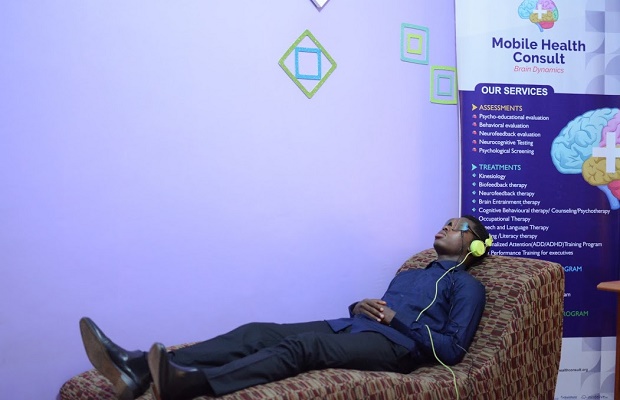Brain Entrainment Therapy
Working Time
-
-
- Mon-Fri 9:00am – 6:00pm
Sat 10:00am – 6:00pm
Sunday Appointment Only
- Mon-Fri 9:00am – 6:00pm
-
Contact Info
-
-
-
Phone: +234 (1) 453 4024
0803 345 1351
-
-
Ask the Experts

We use scientific and innovative devices which use flashing lights and sounds at specified frequencies to train the brain waves into targeted states such as relaxed and calm states; focus and concentration states; energized state and sleep states. This can help children with various learning difficulties and students without any perceived difficulty get a brain boost.
In adults, this device can reduce stress, insomnia, improve mood, mental sharpness and balance (reduced risk of falling) in seniors, and reduce worry plus improvements in concentration and memory which facilitates optimal performance at work.
Our brains produce four basic brainwave states: beta, alpha, theta and delta. Healthy and maximally functioning brains will produce the appropriate brainwaves for a given situation. Reading elicits beta brainwaves while sleeping elicits delta brainwaves. Due to stress, chemical imbalances, genetics, etc, people may produce inappropriate brainwaves for certain activities which lead to varying psychological conditions.
Recent advances and research in cognitive neuropsychology has shown that Audio-Visual Entrainment is an effective non- invasive and non-drug therapy for different psychological, developmental and cognitive difficulties that are caused by improper brainwave production.
This can be used to
- treat children with ADHD, Autsim,
- improve academic performance of university students,
- improve sleeping patterns,
- manage panic and anxiety symptoms,depression,
- treat migraines and headaches, hypertension, PMS,
- reduce pain
- manage post traumatic stress disorder
- improve self-esteem and confidence
- improve sport performances.
- boost memory and concentration
You can purchase Portable AVE home trainers by clicking HERE
Research has shown that audiovisual entrainment is more effective in reducing attentional problems in children with ADHD than medications like Ritalin. A 2005 study by Monastra, Lynn, Linden, Lubar, Gruzelier, and LaVaque reported that children with ADHD who underwent neurofeedback therapy experienced better behavioral control, an increase in attention level, improved intelligence quotients and academic performance, when compared to another group who did not undergo this therapy procedure
Monastra, V. J., Lynn, S., Linden, M., Lubar, J.F., Gruzelier, J., & LaVaque, T. J. (2005). Electroencephalographic Biofeedback in the Treatment of Attention-Deficit/Hyperactivity Disorder. Applied Psychophysiology and Biofeedback, Vol. 30(2) 2, 95-114.
